Opening of 2023 International Workshop on Materials Behavior at Micro- and Nano-scale
In 10th May 2023, the highly expected 2023 International Workshop on Materials Behaviors at Micro- and Nano-Scale (Online and offline) hosted by the Center for Advancing Materials performance from the Nanoscale (CAMP-Nano), State Key Laboratory for Mechanical Behavior of Materials and Xi’an Jiaotong University (XJTU) is officially started in the Room 101 Science Building,XJTU. Professor Evan Ma, professor Jun Sun and professor Ju Li gave opening remarks.
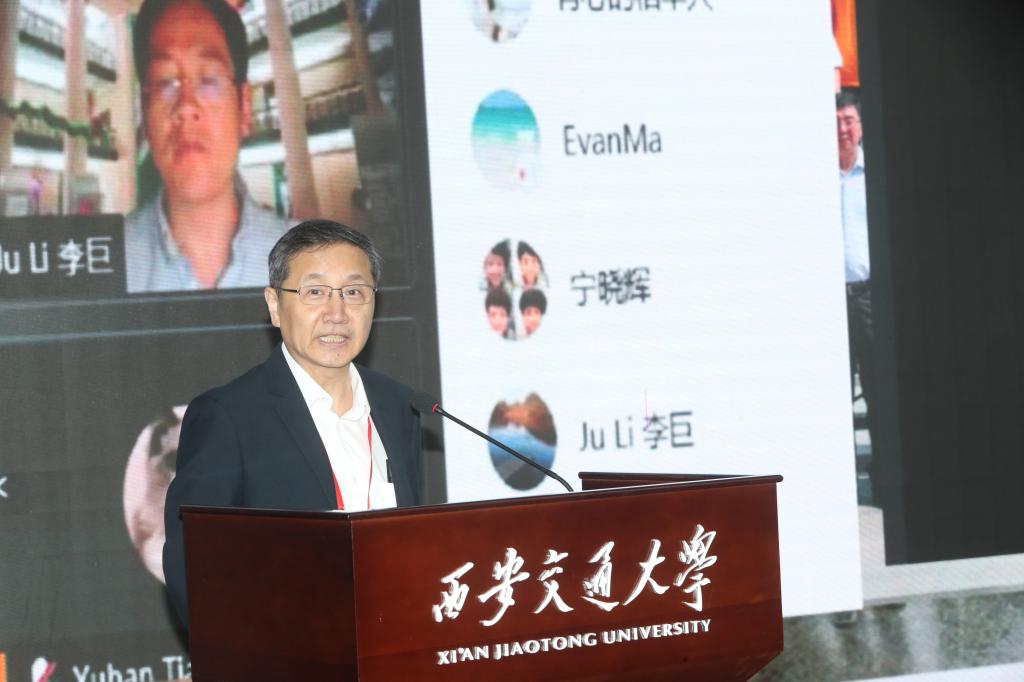
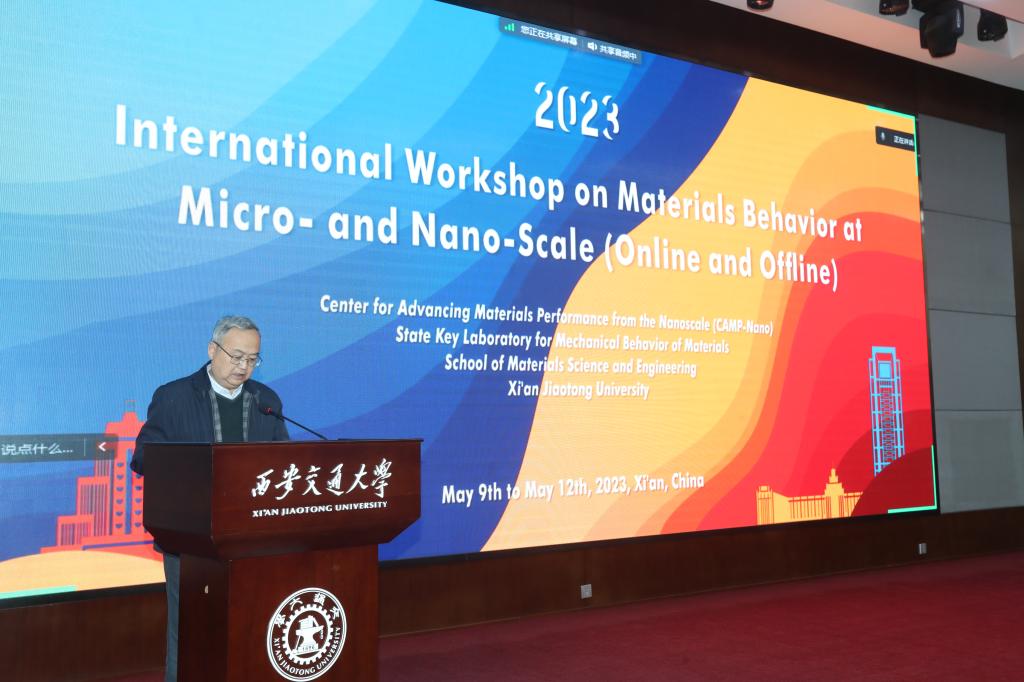
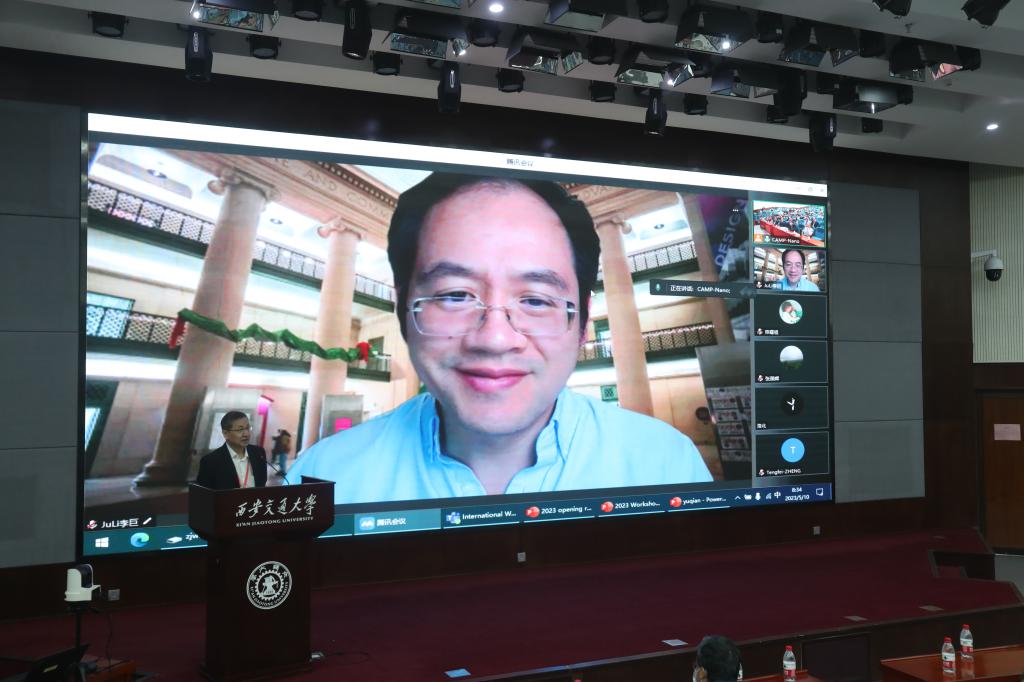
During this first day of academic report, lots of senior researchers and engineers are scheduled to share their excellent work and original ideas used in frontier research. With a introduction of Prof. Jun Sun, all the participants reviews the Workshop from the very beginning - first International Workshop. It is brought again that the aim of Workshop that provide a great opportunities for each researchers, engineers and students who are working on the materials behaviors to meet and share with each has never changed. Here we can say conference begin by the host Prof. Even Ma who is also the first reporter.
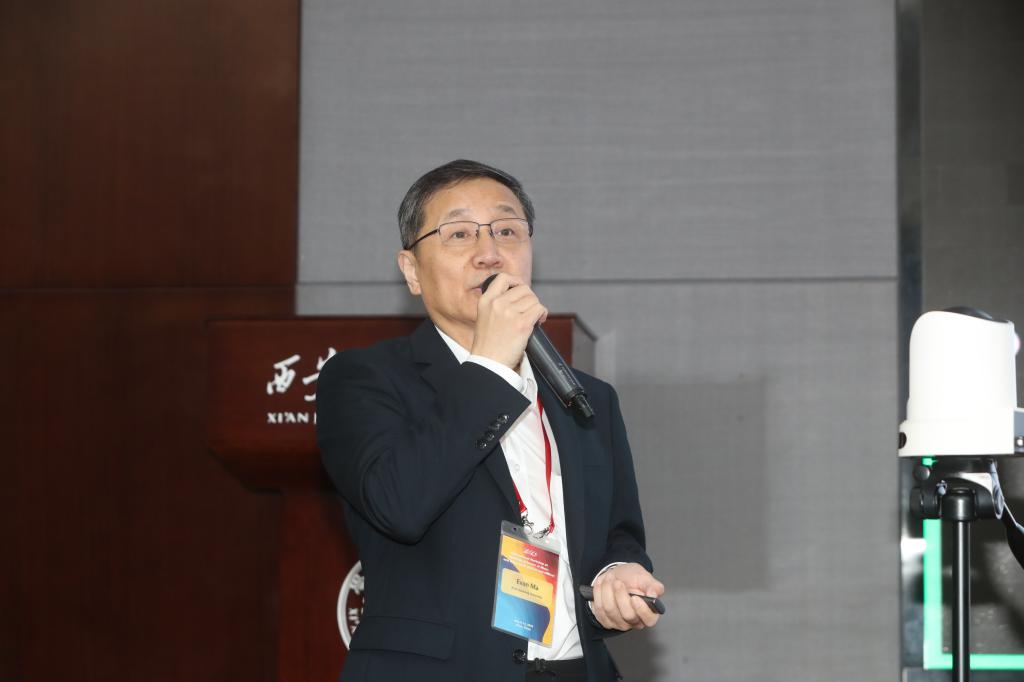
One say they attend Workshop this year should never miss each one of reports today. The first report ’Breaking The Strength-ductility Trade-off’ is consisted by ten question asked by speaker Prof. Even Ma. Using ten progressive question, audiences know the trade-off between strength and ductility, how the inhomogeneous structure solve that trade-off problems and most importantly how to use short range chemical disorder. The presentation ends with a vivid roll skating situation to explain how dislocations behave differently between chemical ordered and chemical short range ordered materials.
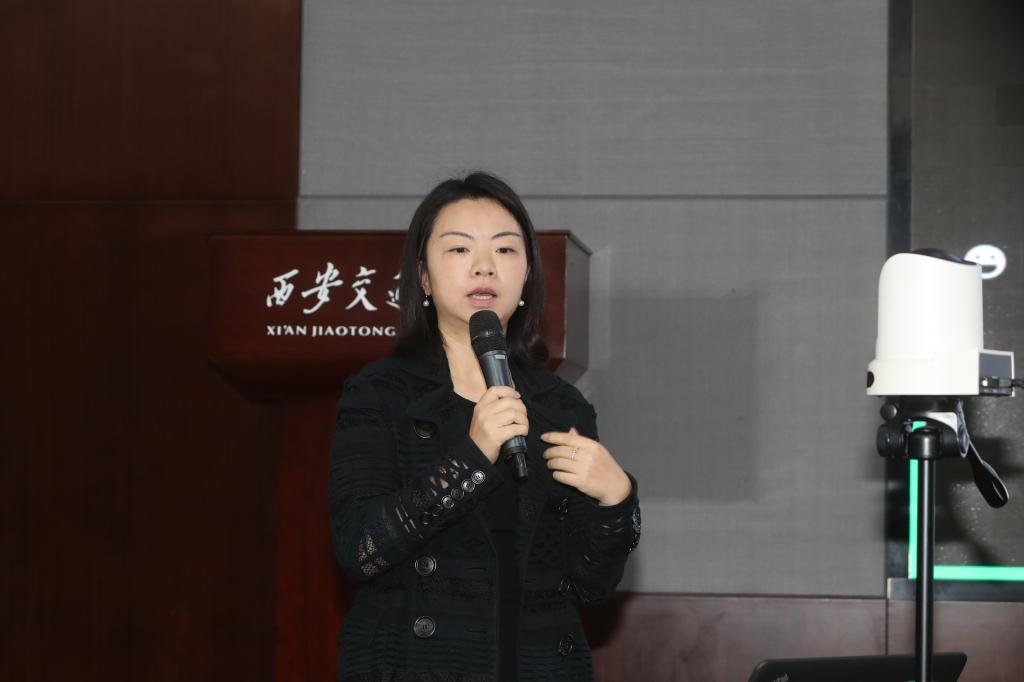
Followed by Prof. Qian Yu from Zhejiang University, she gives a lectures named ‘Investigating Alloy Effect on Dislocation Mechanisms with In Situ and Multi-dimensional Characterizations’. Excellent results about how alloying element modify the dislocation core and result in abnormal increase of activation energy of dislocation motion. In this speak, intrinsic oxygen effect in titanium and dislocation motion mechanism in high entropy alloys.
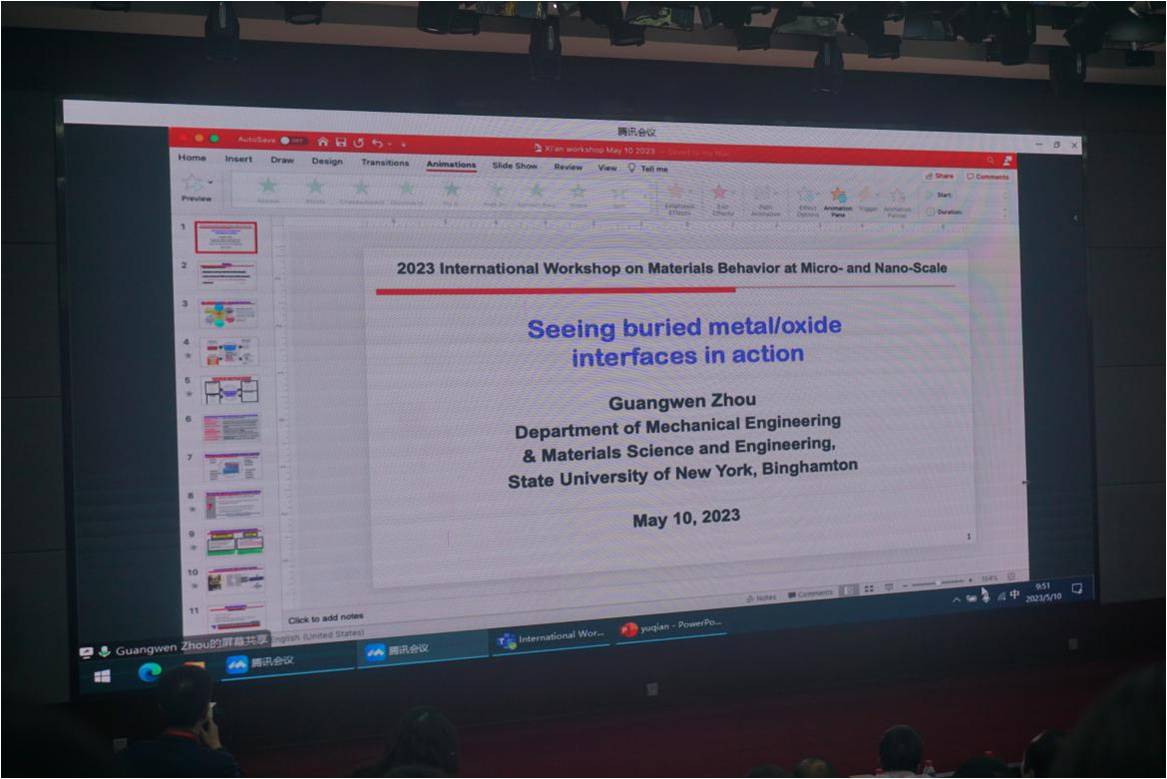
Then it comes to our first online speaker - Prof. Guangwen Zhou, from University of New York, Binghamton, NY, USA, his report is all about ’Seeing Buried Metal/Oxide Interfaces in Action ’. Through exploiting the in-situ capability of environmental transmission electron microscopy to dynamically monitor the reduction of copper oxide to copper.
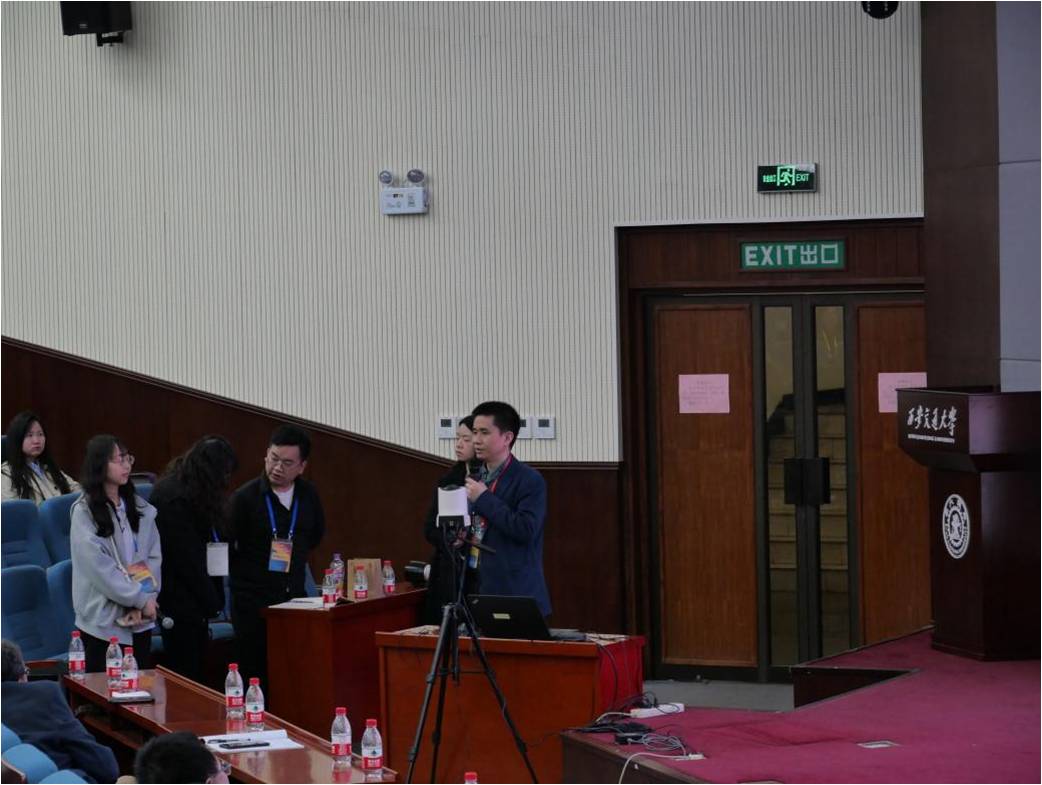
Addictive reports will keep our brains running, which causes a burden to our stomach. Then it comes the Coffee break and Group Photo items. After this short break, Prof. Yuan Wu from University of Science and Technology Beijing is highly welcomed to give his “Local Chemical Fluctuation Mediated Deformation Behavior in Body-centered-cubic High-entropy Alloy ” report. In his group’s work, Local chemical fluctuations were found to influence high entropy alloy deformation behaviors, such as local double cross-slips and localized amorphization.
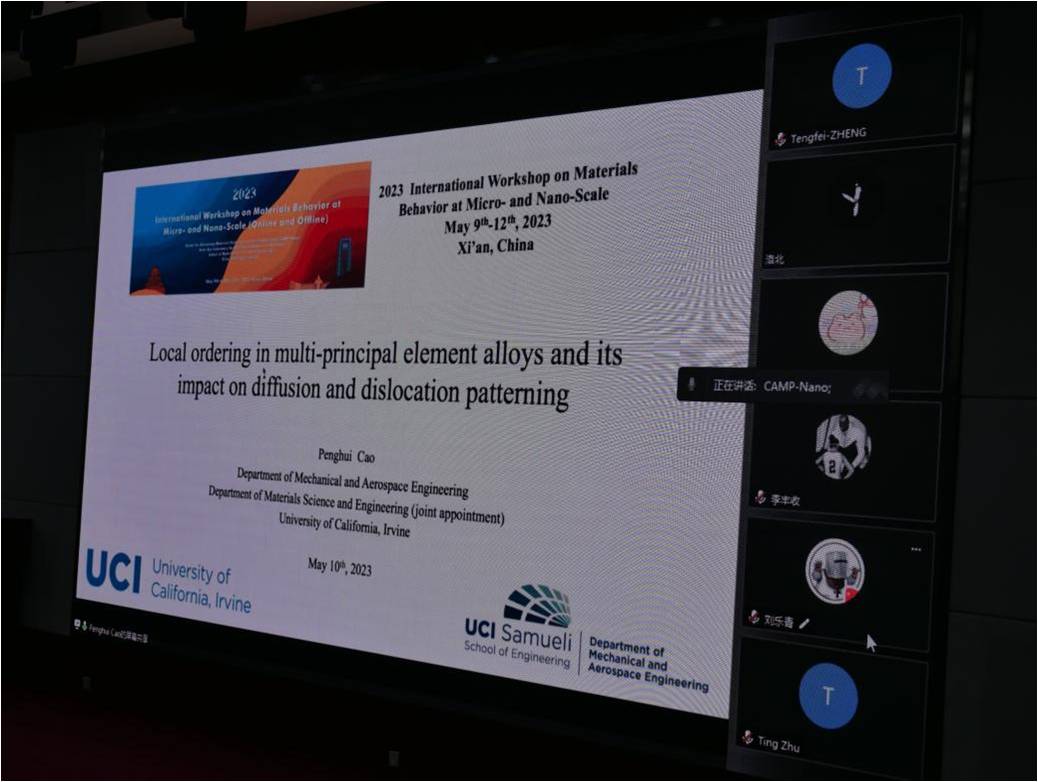
The next online speakers is Prof. Penghui Cao from University of California Irvine CA, United States, his report title is ‘Local Ordering in Multi-principle Element Alloys and Its Impact on Diffusion and Dislocation Patterning’. By introducing special role chemical Short range order play in diffusion and deformation mechanism, convolutional neutral networks are brought out to predict diffusion kinetics in cast compositional spaces of Multi-principle element alloys and the associated timescale of chemical SRO formation.
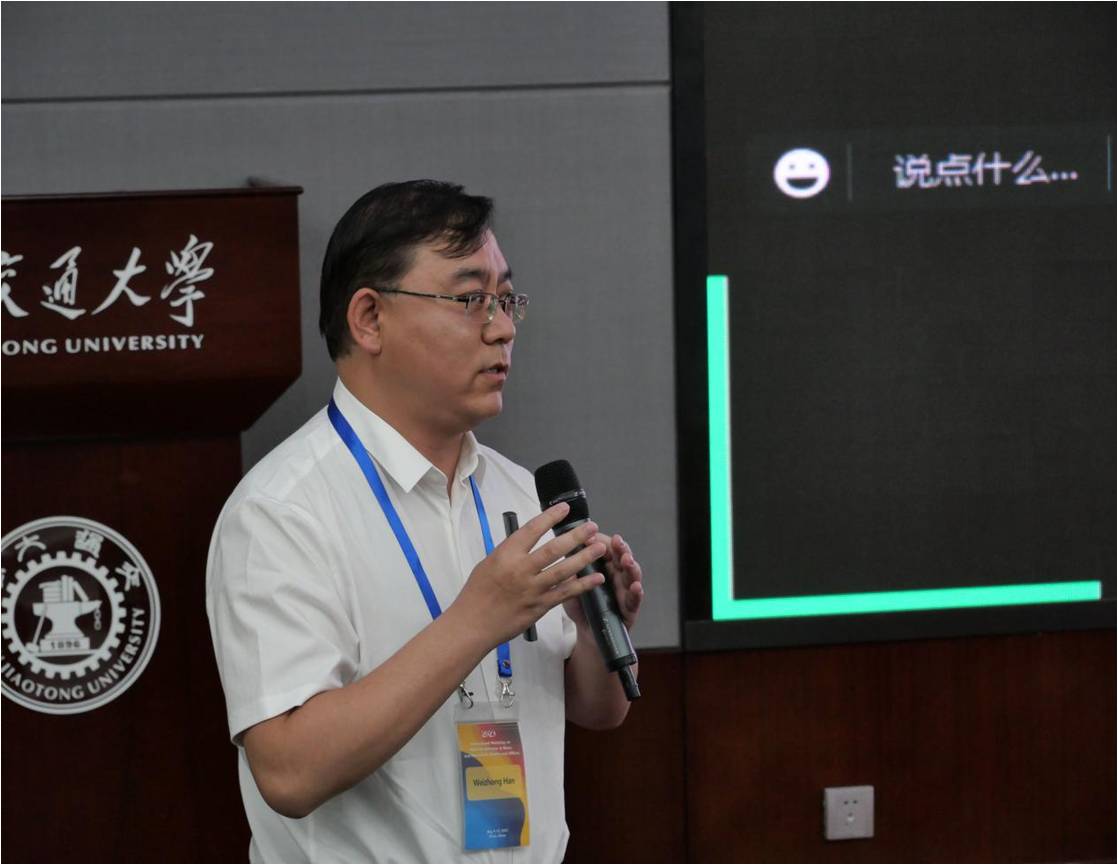
The last speaker this morning is Prof. Weizhong Han from Xi’an Jiaotong University, different from previous alloying element adjusting he proposes a new hierarchical nanolayered structure and get that special structure into Zr-2.5Nb alloy with superior fracture toughness. This unique hierarchical 3D nanolayered structure provides a new framework to develop high perform metallic structure materials for safety-critical applications.
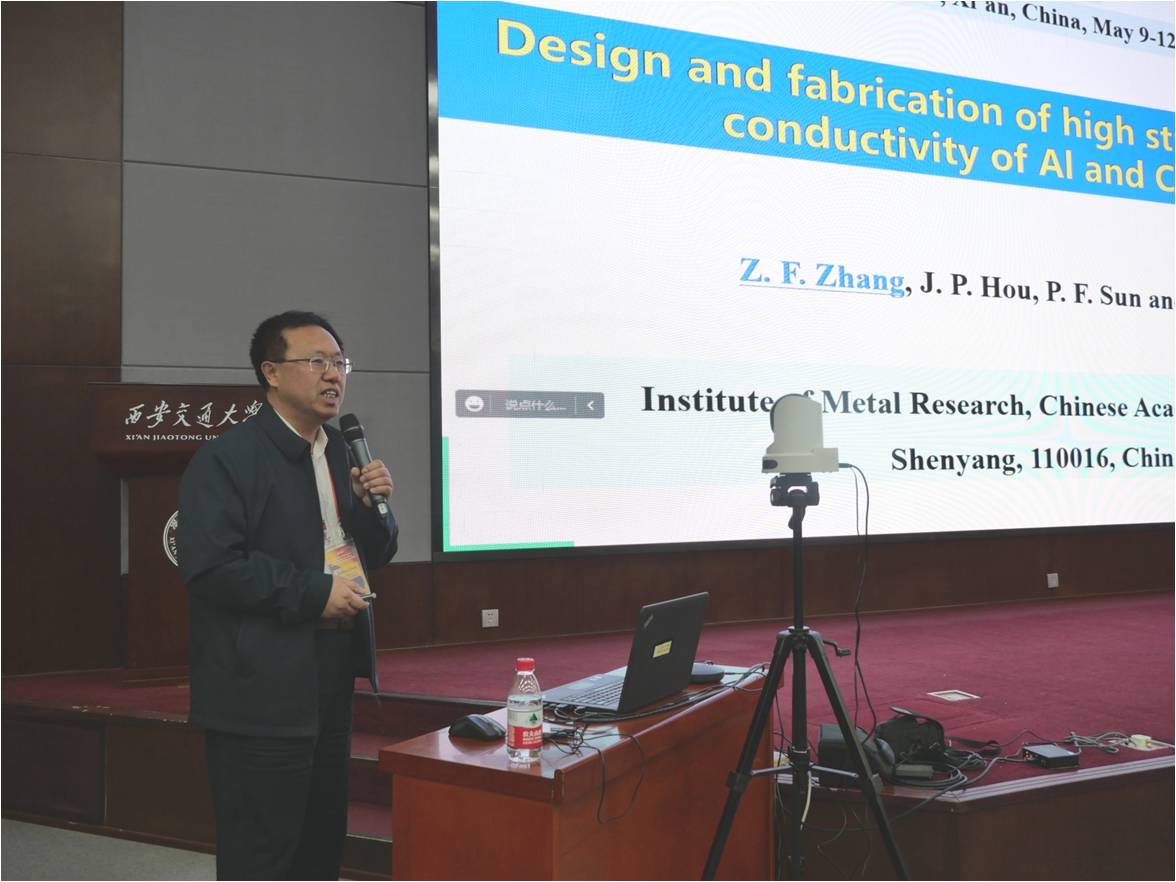
In the afternoon section, hosted by Prof. Lei Lu and Zhefeng Zhang Workshop conference continues. The first report is titled ’Design and Fabrication of High Strength and High Conductivity Al and Cu Wires’ presented by host Prof. Zhefeng Zhang from Chinese Academy of Sciences, Shenyang. He use three new strategies which is elongated grains, sharp/hard texture and nano-scale precipitates to fabricate Al and Cu wires with high strength and high conductivity the at the same time.
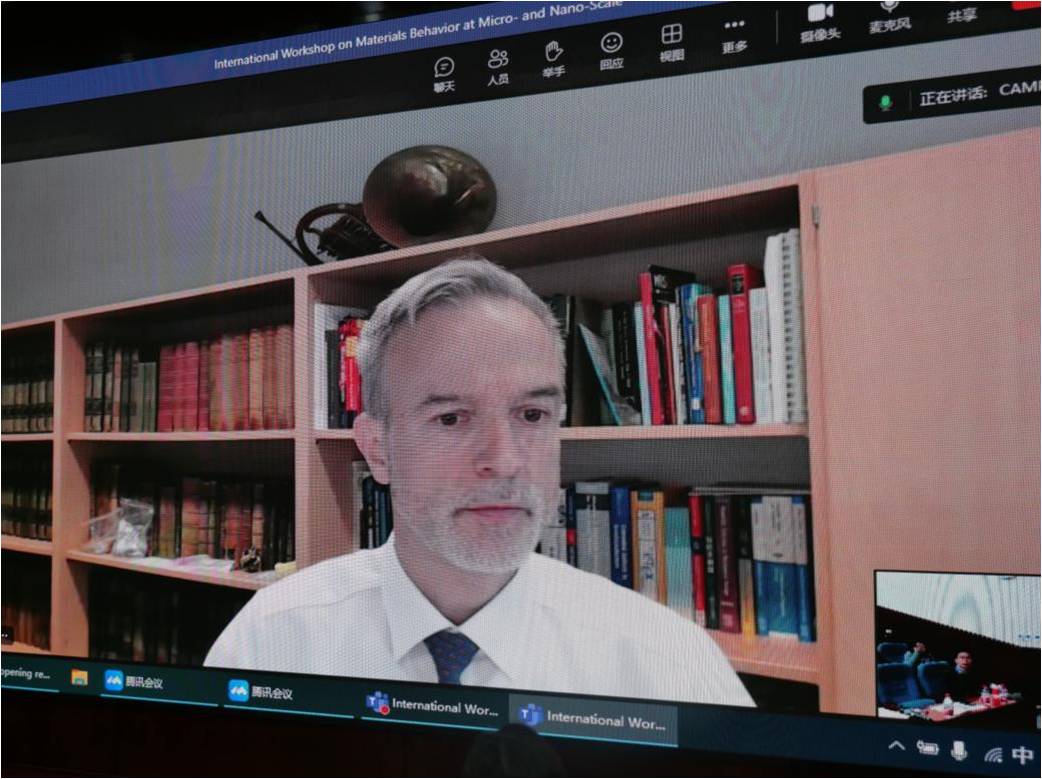
Followed by Prof. Dierk raabe from Max-Planck Institute fur Eisenforschung, Dusseldorf who present ‘The Nano-Science Behind Green Steel making’ report online. Key mechanisms of hydrogen- and ammonia-based direct reduction and hydrogen-based plasma reduction are introduced. By understanding those mechanisms one can enable massive CO2 reductions during iron reduction process.
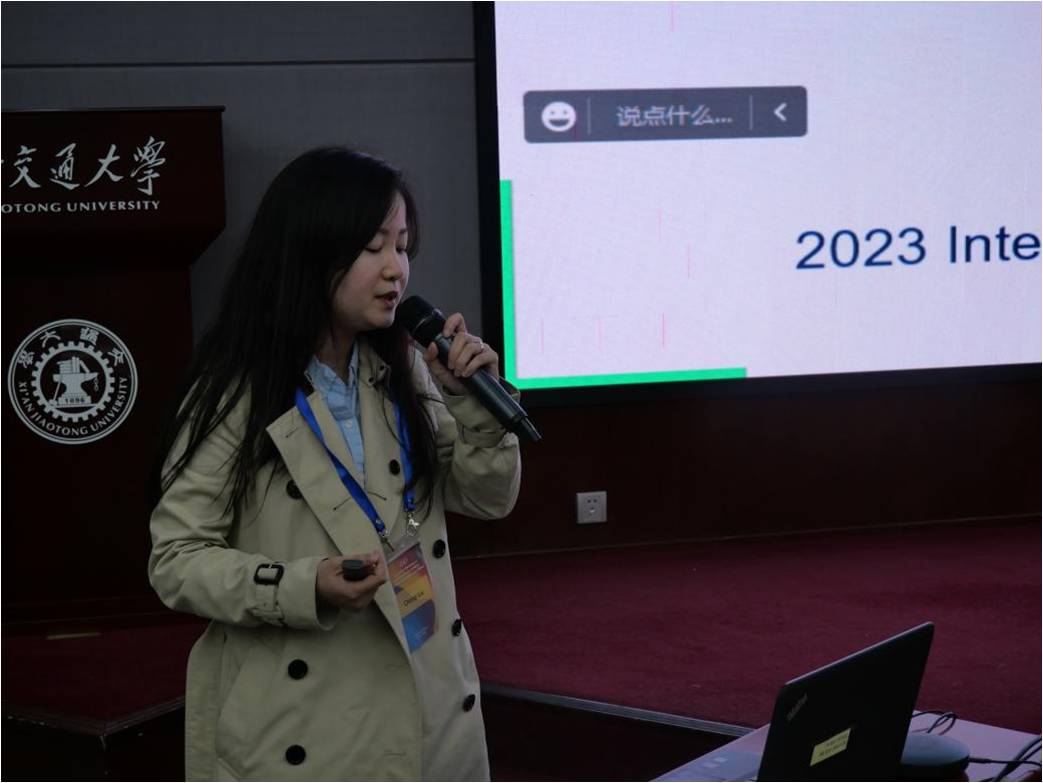
The next reporter is Prof. Chang Liu from Xi’an , she deliver an excellent report - ‘Strategies for Strengthening and Toughening Multi-component High Entropy Alloy’. Multiple strategies such as dual-nanoprecipitation and high stress twining and metastable ceramic phase are proposed.
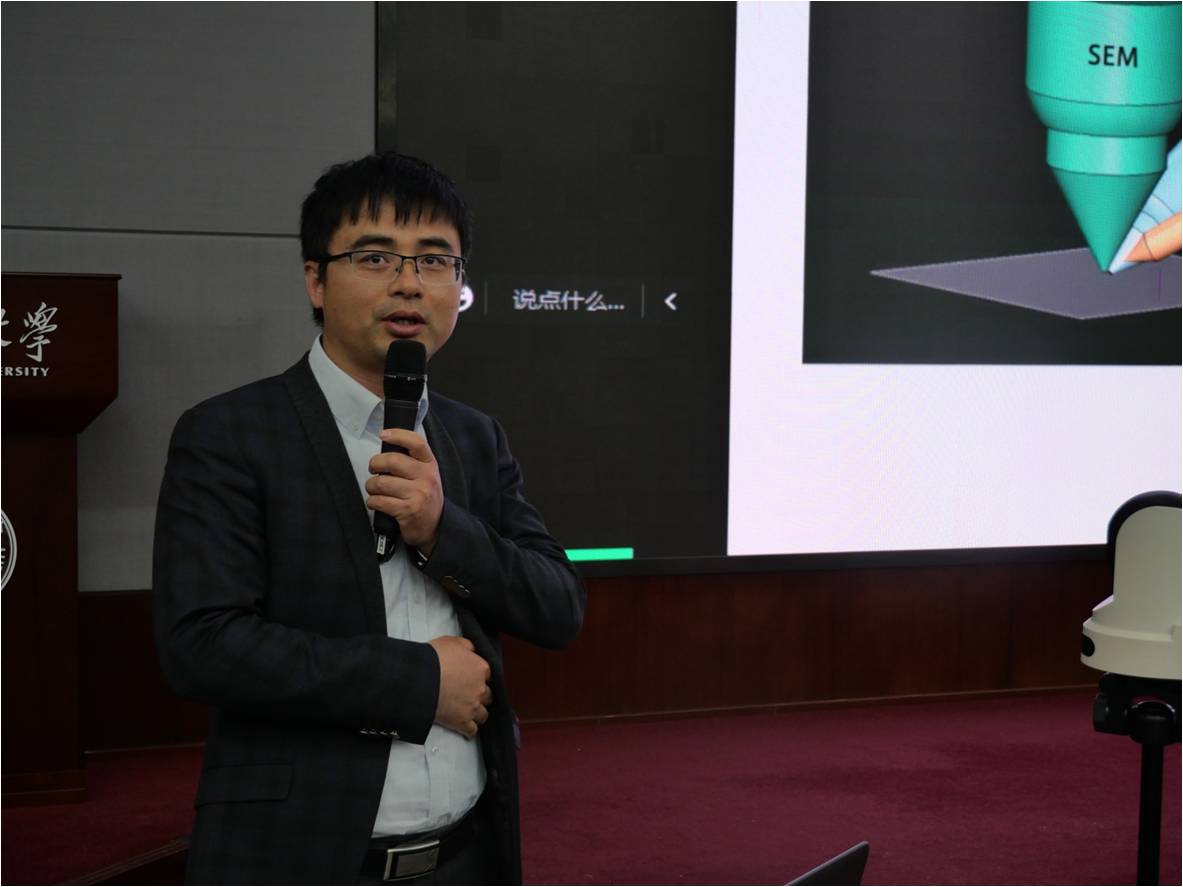
Next reporter is Engineer Xiwen Zhang from Hitachi High-Tech Scientific solutions(Beijing) Co. Ltd., he introduces three types of FIB equipment and which cases they fits better. A new linkage system between FIB and TEM sample holder can better solve oxidation problem.
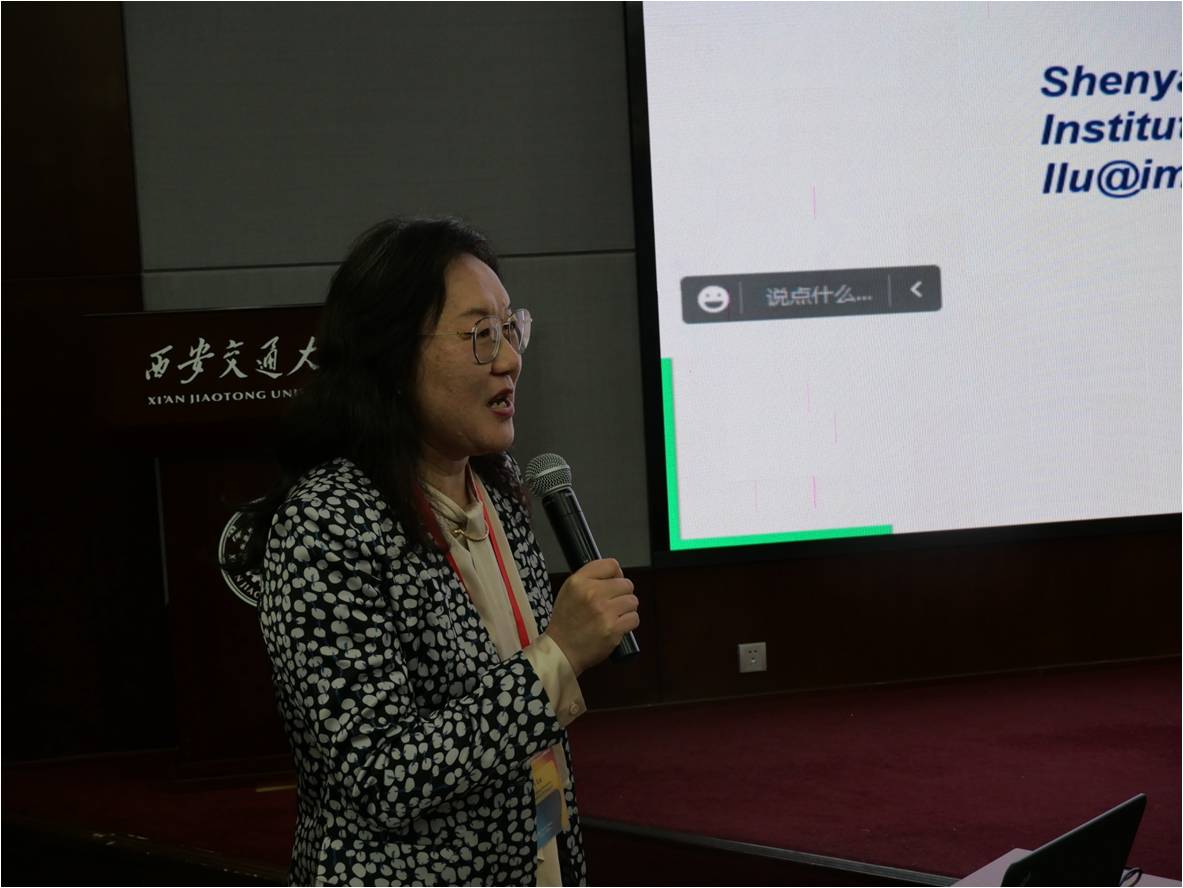
After a short break, ‘gradient Cell Structured High-entropy Alloy wit Superior Mechanical Behavior’ is given by Prof. Lei Lu from Shenyang National Laboratory. By introducing a gradient nano-scaled dislocation-cell-structure stable single phase high entropy alloy, chemical feature, low angle boundary and high density of tiny stacking-faults and twinning together contribute to a unique deformation mechanism.

Prof. Rong Yu from Tsinghua University presents ‘Imaging and Counting Interstitial Atoms via Adaptive Propagator Ptychography’. In his report, deep-sub-angstrom resolution imaging for metal and alloys via adaptive propagator ptychography. By removing surface damaged layers, it has been found HCP structure titanium have oxygen interstitial occupied the octahedral sites while tetrahedral sites in BCC-structure titanium have high oxygen content.
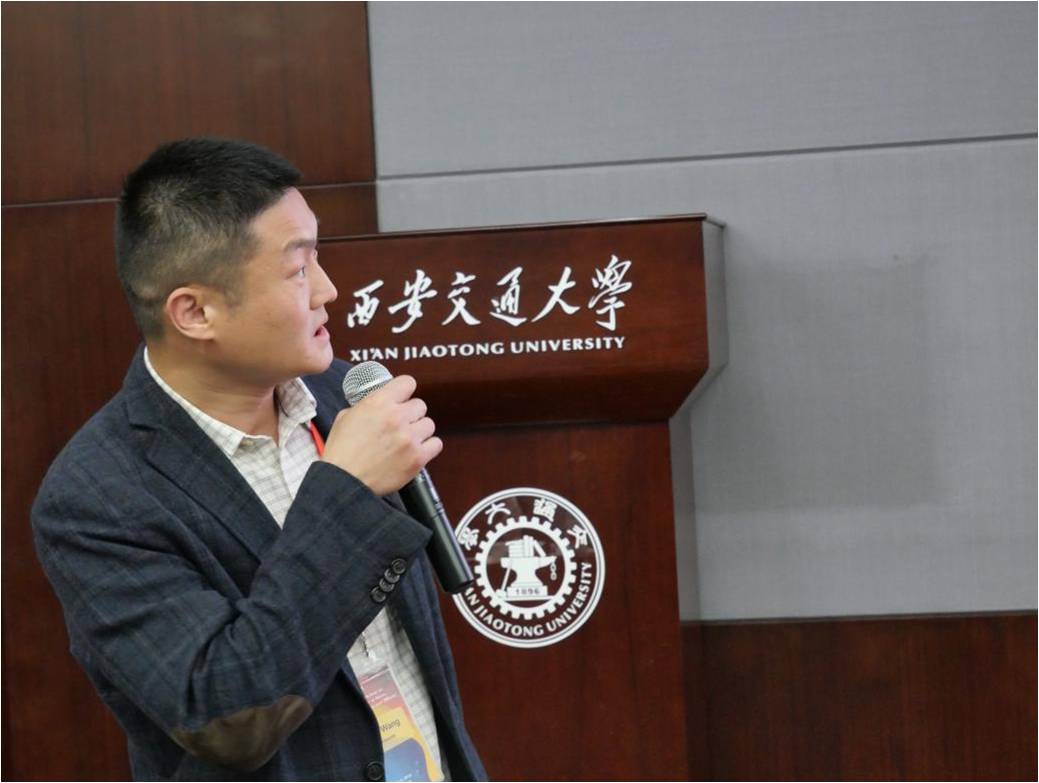
The next report ‘Electropulsing Induced Microstructural Changes and Electroplasticity in Metallic Materials’ is given by Prof. Jiangwei Wang from Zhejiang University. In his report, by using in situ TEM electropulsing experiment with nanosecond pulse, the relation between deformability and medium-range order is established.
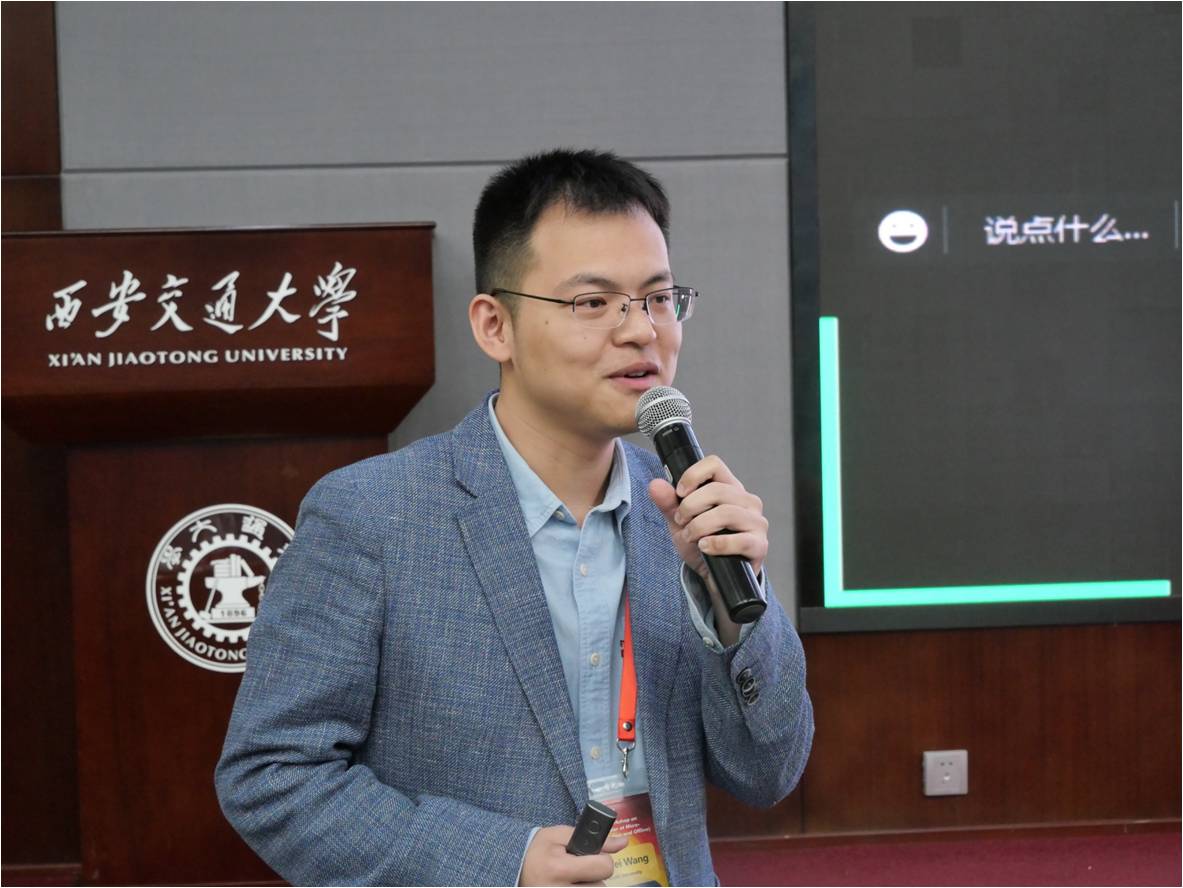
The last speaker of today is Prof. Zhangwei Wang from Central South University, he give a report whose title is ’Compositionally Complex Alloys-Toward The Design of Exceptional Materials’. In this report, formation and strain hardening mechanisms of microband-induced plasticity are brought out. Deformation mechanisms of compositionally complex alloys includes interactions between dislocations and dual-nanoprecipitationof carbide and B2, high-stress twinning.
Our whole information in the first day of Workshop are recorded above. More and more exciting reports are coming in the following two days, please keep paying attention to our follow-up information.

